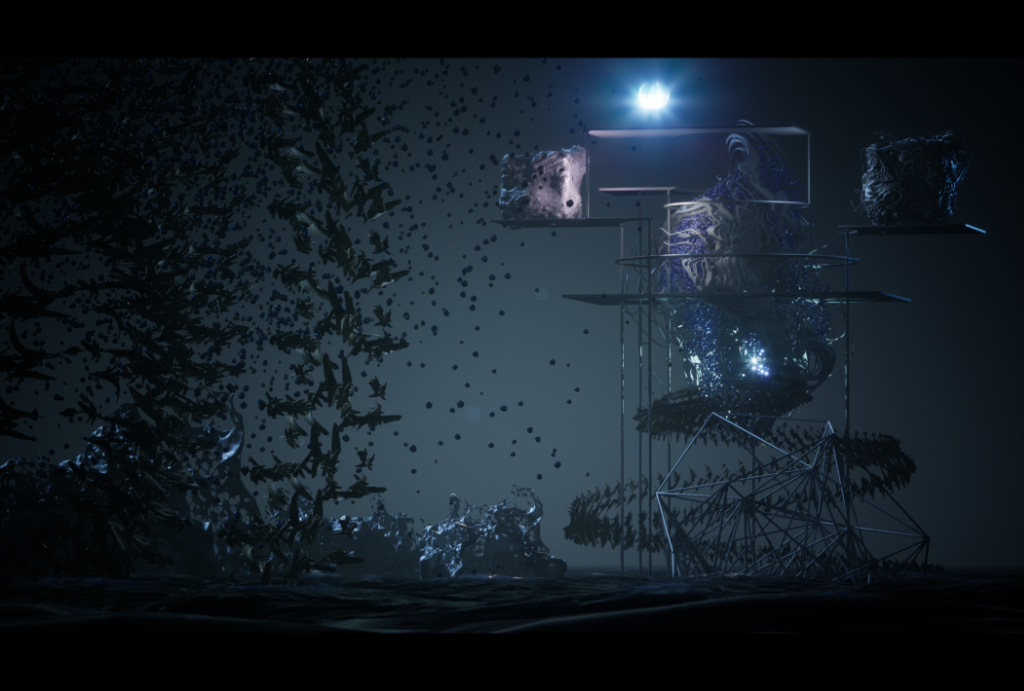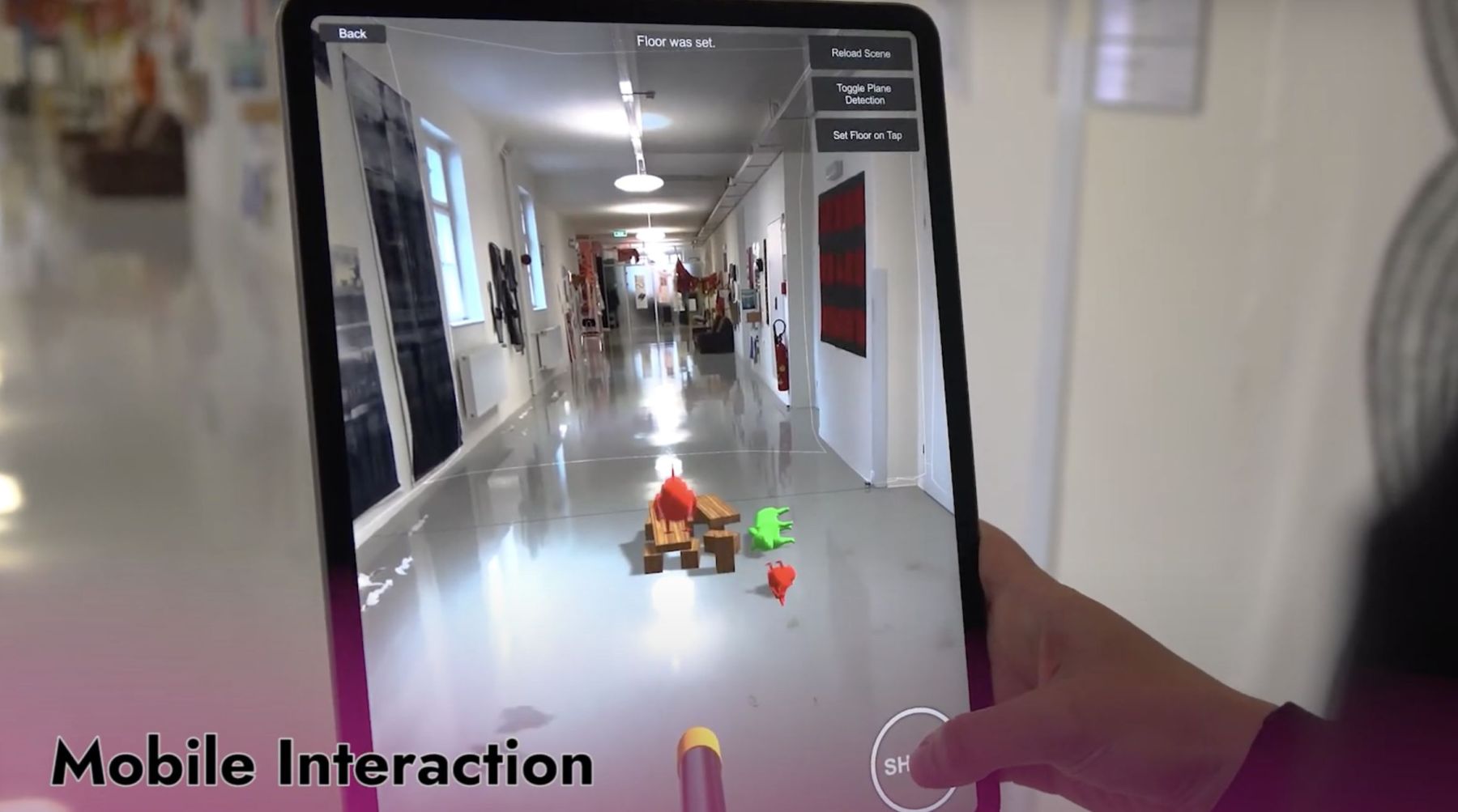Interview by CLOT Magazine

The Interface Cultures Master programme at the University of Art and Design Linz, under the guidance of artist Christa Sommerer, has become an incubator of innovation and experimentation in the ever-evolving world of art and technology. Founded in 2004 by Sommerer and Laurent Mignonneau, the program draws inspiration from their experience at the Institute of Advanced Media Arts and Sciences in Japan, exploring the potential of media technologies to push the boundaries of creativity and inspire new ways of thinking.
The Interface Cultures program is designed for students who are eager to explore the intersection of art, engineering, industry, and design, with a curriculum focused on experimentation, at the same time as encouraging students to challenge traditional norms and boundaries and to seek out new and unconventional combinations of ideas.
The course is designed to reinterpret and advance the discourse in the fields of interactive art, interaction design, game design, tangible interfaces, auditory interfaces, fashionable technologies, wearable devices, intelligent ambiences, sensor technologies, telecommunication and new experimental forms of human-machine, human-human and machine-machine interactions and the cultural discourse surrounding them.
This year, the Interface Cultures program presented a collection of fifteen pieces under an exhibition titled Crossing the Bridge, which aimed to bridge the gap between art and science, the past and the future, and the general public and specialists. The exhibition, which was held as part of the Ars Electronica festival in Linz, was a true reflection of the program’s mission to overcome boundaries.
One of the key themes explored by the Interface Cultures program is the impact of media technologies and social media on our emotions and psychology. As technology continues to advance, it is crucial that we consider the implications of these developments on our collective emotional and mental well-being. Through the works presented in “Crossing the Bridge,” the students of the Interface Cultures program offer unique perspectives on this important topic and provide a glimpse into the potential of technology to shape our emotional landscape.
As the world faces new challenges and imagines future possibilities, the Interface Cultures programme creates a vital space for exchanging ideas and exploring new horizons in art and technology, and Christa Sommerer gave us some insights into the Masters and its programme during the 2022 course.



In 2004, along with Laurent Mignonneau, you founded the Interface Cultures Master programme at the University of Art and Design Linz. The study programme teaches the confluence of media / digital art, interactive art, and interface design. How do you think your backgrounds and past experiences shaped and are reflected in the Interface Cultures Master programme?
The Interface Cultures program is greatly influenced by our previous experience at the IAMAS Institute of Advanced Media Arts and Sciences in Gifu, Japan. We were Associate Professors there before we moved to Linz to set up the Interface Cultures program. The IAMAS Institute is a graduate program where digital creators learn to use and create media technologies in an innovative way that is both artistic and scientific. At IAMAS, the term “digital creator” is used very broadly, and the typical students come from the arts, engineering, and a more industrial or design background.
This openness of disciplines can be very liberating as it enables new combinations, research, and “out of the box” thinking. When we came to Linz, we had this IAMAS model in mind and designed a master study curriculum that focuses on interaction and interface design, however, with a very broad and open spirit where digital creators are trained and supported to develop new and surprising prototypes, artworks and design propositions.
Challenging and reshaping the role that technologies can play in culture and society is part of Ars Electronica’s commitment; From your perspective and experience within the Interface Cultures Master programme, how do you see this role of cultural institutions (festivals, universities, museums, etc.) in shaping and defining the core values of cultural/artistic research? How has the Interface Cultures programme’s reception and interaction with other institutions?
When we started the Interface Cultures program at the Art University in Linz in 2004, most of our colleagues thought that we were techno freaks who celebrated the latest technologies. This was, by the way, also often an argument that art people had against Ars Electronica and its media art community. However, now that this digital technology is invading almost all aspects of our lives, people have realised that we deal with a much larger phenomenon than just creating or using a few techno gadgets. Interactive technology is changing the way we communicate and create. This is something that Stephen Johnson, the author of the book “Interface Culture” has already predicted in 1997.
Now we see a real cultural shift, and almost all art practices also use some form of digitalization. Cultural institutions such as the Ars Electronica, the Art Universities and the museums and galleries where these new forms of digital and hybrid creations can be shown are important platforms for allowing experiments, testing ideas and providing spaces for discussions with the public as well as other experts.
This is why we believe that the yearly presentations of the Interface Cultures department at the Ars Electronica Festival in Linz are so important for our students: they are right at the centre of an international community which comes to Linz to exchange ideas, discuss the latest trends and see the latest up-to-date media artworks and technical prototypes.
Auditory interfaces, VR and AR-based interaction, multi-modal interaction (camera-based interaction, voice-driven interaction, gesture-based interaction), and robotic and artistic interfaces… a myriad of different forms are currently being used by artists to explore interactivity frontiers, but what new technology or scientific development are you most excited about seeing being used in an artistic context, especially in the area of interactivity and interfaces?
It is always hard to predict the future; this is why we follow a very broad artistic/scientific path at Interface Cultures regarding technological developments. From today’s point of view, Augmented Reality seems to have matured to the point where seamless interaction between digital worlds and real environments becomes more and more realistic. In our retrospective show “The Artwork as a Living System”, which takes place at the OK Center in Linz, we show a newly developed application called “Ar[t]chive” for the Hololens AR system.
Here visitors can navigate through our personal archive of artworks, including images, texts and videos by using hand gestures: they see these archive materials magically float around them. From observing the visitors, we believe that many (especially young people) are now ready for this type of augmented reality system; people are now more and more getting used to having real and virtual worlds merge. If this type of AR system prevails in the future and becomes more easily wearable, then there will be a huge explosion of creative applications for it.
And where do you see we are headed regarding our physical interaction with the digital world? We are quite interested in the idea of brain-computer interfaces able to reproduce haptic feedback, but what’s the future looking like? And on a more ontological level, what impact do you think these developments will be on human beings, as our existence is clearly moving away from an exclusive physical existence only?
Brain-computer interfaces (BCI) are also becoming more stable and usable. Especially in the rehabilitation sector for stroke patients and people with locked-in syndrome. There is still a long way to go for a more general public or art and gaming because we must overcome the long training phase. But it is now that artists/scientists have the chance to shape these technologies. This is why one of our PhD students at Interface Cultures, Erika Mondria, is exploring the applications of BCI to art.
The Interface Cultures department is a partner of Ars Electronica, who, in 1991, launched the Interactive Art category for their Prix Ars Electronica). How has the dialogue with Ars Electronica been from the Interfaces Culture department’s point of view?
We are very lucky to have a close connection to Ars Electronica since Laurent Mignonneau and I have exhibited at Ars Electronica from a very early stage; we won several awards in the Interactive Art category, including the Golden Nica Award in 1994, and we have also served as jury members in this award category. We have a very strong personal connection to the founders of Ars Electronica and also to the heads and members of the core team.
Right from the beginning, when we moved back to Linz and set up the Interfaces Culture department in 2004, Gerfried Stocker supported us by giving space for our student exhibitions at the Campus format of the festival and also our previous Art University Rektor, Dr Kannonier and our recent Rektor, Mrs Hütter fully support this collaboration between our institutions. From a few student project presentations in 2005, this Campus format has now grown into a major production at the Ars Electronica festival with up to 270 people involved.
Some students and external artists will present works this year on the main Ars Electronica site at the JKU campus, with an exhibition titled CROSSING THE BRIDGE, which refers to breaking those barriers between the arts and the science now more relevant, so new unexpected paths can be taken, and new bridges and connections can be built. What have been the main discussions while organising the exhibition?
The background for this decision to move back into the centre of the festival was that the Interface Cultures exhibition was located at the Art University building for the past two years. This was great because we had full control over the space. However, we noticed that many festival visitors were reluctant to come to the art university as it was far away for them, and they were a bit afraid to enter the art university context. This is why we decided to return to the main event space where scientists, engineers and many regular visitors meet.
We want to have this open dialogue with people who are usually not coming to art exhibitions, and we want to make them see our student works and enable new meetings and new discussions. For many years the Ars Electronica festival took place at the old Post City, a fantastic and lively venue where people from all disciplines and backgrounds met to see our student’s works and discuss. We also look forward to this vibrant atmosphere at the Ars Electronica this year.
Looking at the exhibition participants’ artworks, a significant number of them deal with emotions and nature. Do you think it reflects the current times or is more inherent to the nature of the “Interactive Cultures” itself? What have been the biggest challenges in producing these artworks?
Yes, we can say that the wide and rapid spread of media technologies and social media has created new forms of emotional and psychological impacts. Several of your students deal with this in their artworks and prototypes. Also, the issue of sustainability and environmental responsibility is becoming very important for the young generation.
This is why we see many experiments in this direction, where artists/researchers/digital creators propose new ways of looking at the relationship between the world, the human, animals and the environment through their interface-based projects. A big challenge when one creates such projects is not to make them too complicated so the general public still understands them but also to make them complex and sophisticated enough that they tell an interesting story and go beyond what has been seen before.






